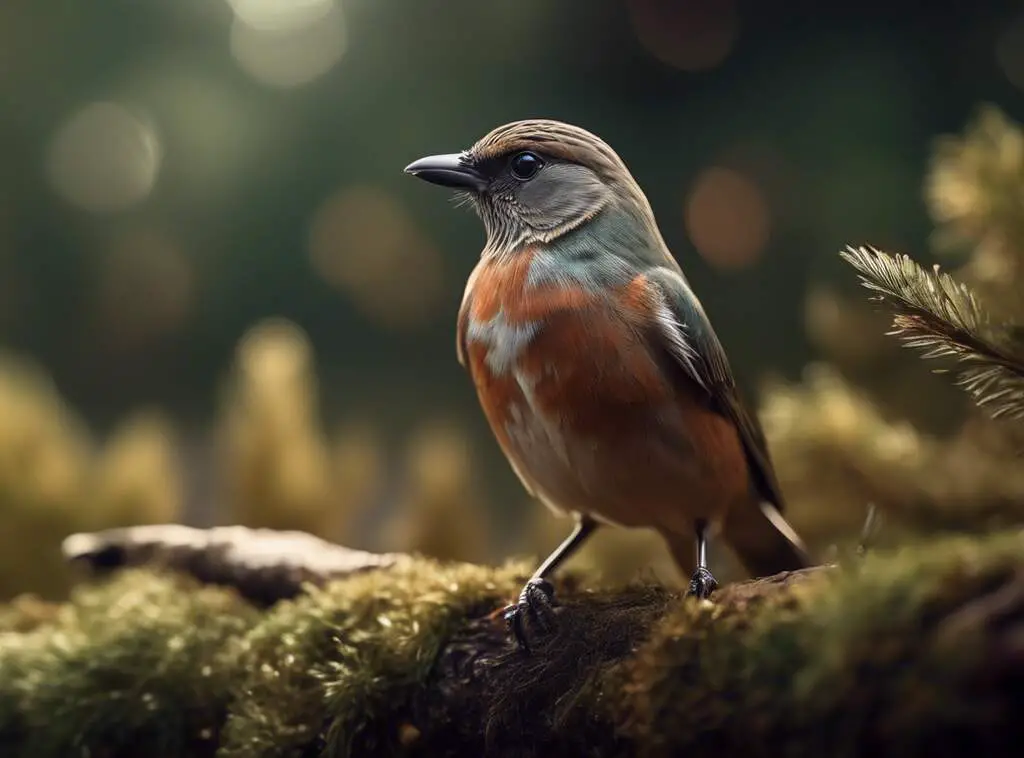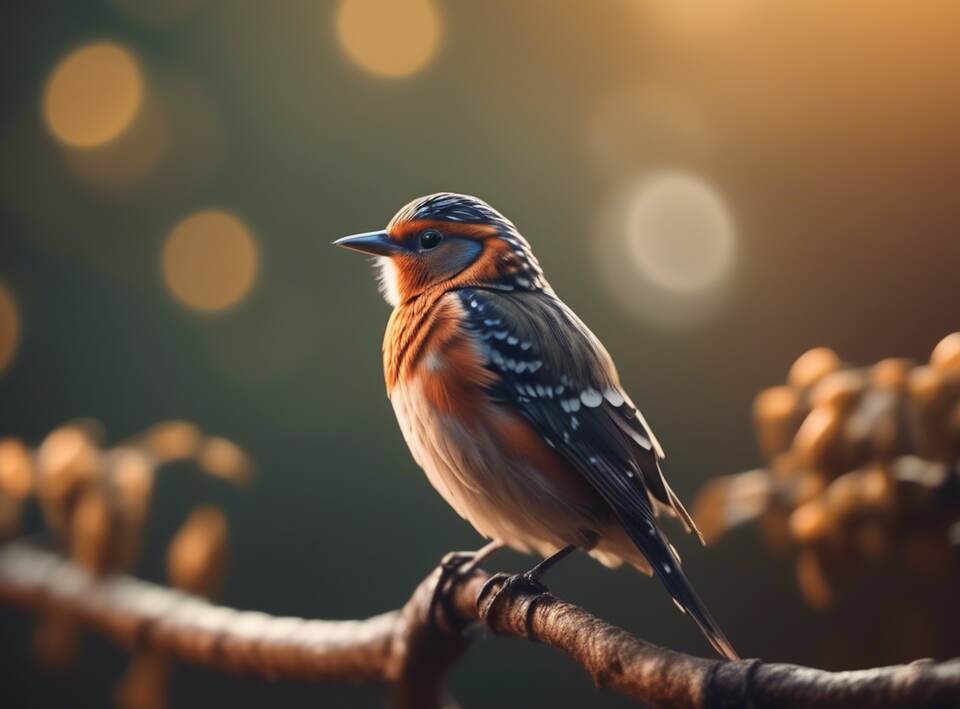The art of bird photography is a captivating pursuit that requires a keen eye, patience, and technical skill. While various factors contribute to capturing stunning images of birds in their natural habitat, one variable stands out as particularly crucial: lighting. The significance of lighting in bird photography cannot be overstated, as it plays a fundamental role in determining the quality and impact of the final images.
Table of Contents
The Significance of Lighting in Bird Photography
Natural Light: The Photographer’s Best Friend
When it comes to bird photography, natural light is often considered the best source of illumination. The soft, warm glow of the sun during the golden hours of sunrise and sunset can transform a simple bird portrait into a work of art. The angle and quality of light during these times create a magical atmosphere, enhancing the colors and textures of the bird’s plumage and surroundings. As a photographer, understanding how to leverage natural light to your advantage is key to capturing breathtaking bird images.
Importance of Direction and Intensity
The direction and intensity of light can make or break a bird photograph. Front lighting, where the light source is behind the photographer and illuminates the subject from the front, helps reveal the colors and details of the bird effectively. Backlighting, on the other hand, can create striking silhouettes or halo effects around the bird, adding a touch of drama to the image. Side lighting accentuates textures and shapes, casting shadows that add depth and dimension to the photograph. Understanding how different lighting angles can affect the mood and composition of your bird photos is essential for achieving compelling results.
Managing Harsh Light and Shadows
While natural light is prized for its beauty, it can also present challenges, especially when dealing with harsh midday sunlight. The strong overhead light can create deep shadows and blown-out highlights, resulting in uneven exposure and loss of detail. To overcome these issues, photographers can utilize techniques such as using a diffuser or reflector to soften harsh shadows, adjusting the camera settings to balance exposure, or waiting for cloud cover to diffuse the light. By mastering the art of managing harsh light and shadows, photographers can capture bird images that are well-exposed and visually pleasing.
Golden Hour: A Time for Magic
One of the most coveted times for bird photographers is the golden hour, the period shortly after sunrise and before sunset when the light is soft, warm, and diffused. During this magical time, the low angle of the sun bathes the landscape in a flattering glow, creating rich colors and gentle shadows. Birds basking in the golden hour light often appear more vibrant and alive, making it an ideal time to capture stunning photographs. Planning your bird photography outings around the golden hour can significantly enhance the visual appeal of your images.
In bird photography, mastering the art of lighting is essential for creating impactful and visually compelling images. Whether harnessing the soft glow of natural light, experimenting with different lighting angles, or overcoming challenges posed by harsh light conditions, photographers who understand the significance of lighting can elevate their work to new heights. By honing your skills in manipulating and working with light, you can capture breathtaking bird photographs that truly stand out.
Selecting the Appropriate Camera Settings for Capturing Birds
The choice of camera settings plays a pivotal role in capturing stunning bird photography. Understanding and utilizing the appropriate camera settings can make a significant difference in the quality of your bird photographs. Let’s delve into the essential variables to consider when aiming to achieve remarkable bird shots.
Importance of Aperture in Bird Photography
Aperture, denoted by the f-stop value, controls the size of the opening in the lens through which light enters the camera. In bird photography, a wide aperture (low f-stop number) helps in achieving a shallow depth of field. This means that the bird is in sharp focus while the background is beautifully blurred, highlighting the subject and creating a visually appealing image.
Shutter Speed Essentials for Bird Photography
Shutter speed determines the amount of time the camera’s sensor is exposed to light. When capturing birds in motion, a fast shutter speed is crucial to freeze their movement and avoid any blurriness. A shutter speed of around 1/1000 seconds or higher is recommended to ensure sharp and crisp bird images, especially during flight or quick movements.
The Role of ISO in Bird Photography
ISO refers to the camera sensor’s sensitivity to light. A higher ISO setting allows for shooting in low-light conditions; however, it can introduce digital noise to the image. In bird photography, where lighting conditions can vary, it’s essential to find the right balance. Keep the ISO as low as possible to maintain image quality while ensuring proper exposure of the bird.
Consider White Balance for Accurate Color Representation
White balance is often overlooked but is crucial for capturing the true colors of birds. Different lighting conditions can affect the color temperature of the image. Adjusting the white balance settings based on the lighting environment, such as sunny, cloudy, or shade, helps in achieving accurate and natural-looking colors in your bird photographs.
Autofocus Mode for Precision in Bird Photography
In bird photography, where subjects are constantly moving, selecting the appropriate autofocus mode is vital. Continuous autofocus (AI-Servo for Canon or AF-C for Nikon) allows the camera to track and maintain focus on the bird as it moves within the frame. This ensures sharp focus on the subject, even during erratic movements.
Metering Mode for Balanced Exposures
Metering mode determines how the camera evaluates the light in a scene to set the exposure. In bird photography, where the subject may have different lighting than the background, using the spot metering mode helps in achieving a well-exposed bird without being influenced by the surrounding light conditions.
Mastering the right camera settings is fundamental to capturing breathtaking bird photography. By understanding the significance of aperture, shutter speed, ISO, white balance, autofocus mode, and metering mode, you can elevate your bird photography skills and create striking images that truly showcase the beauty of these magnificent creatures. Experiment with different settings, practice consistently, and observe the results to refine your technique and capture stunning bird photographs.
Conclusion
By understanding the significance of lighting in bird photography and selecting the appropriate camera settings, photographers can elevate their bird photography to new heights. Light plays a crucial role in highlighting the beauty of birds, creating mood, and emphasizing details. Whether it’s the soft glow of sunrise, the harsh shadows of midday, or the golden hour before sunset, the quality of light can make or break a bird photograph. Photographers must pay close attention to the direction, intensity, and color temperature of light to create stunning bird images that stand out.
In addition to lighting, selecting the right camera settings is essential for capturing birds in their natural habitat. Fast-moving birds require specific settings to freeze motion and achieve sharpness in images. Shutter speed is a critical factor in bird photography, as it determines whether the bird’s wings will be frozen in flight or blurred due to motion. Aperture controls the depth of field, allowing photographers to isolate the bird from the background or capture the entire scene in focus. ISO sensitivity comes into play in low-light conditions, helping to maintain image quality while balancing exposure.
Moreover, understanding the behavior of birds and their habitats can greatly impact the success of bird photography. Patience is key when waiting for the perfect moment to capture a bird in action, whether it’s taking flight, hunting for prey, or interacting with other birds. Learning about bird behavior can also help photographers anticipate movements and position themselves for the best angles. Familiarizing oneself with different bird species and their habitats enables photographers to capture unique and intimate moments rarely seen by others.
Furthermore, investing in the right gear and accessories can enhance the quality of bird photography. A telephoto lens with a long focal length is essential for capturing birds from a distance without disturbing them. Tripods and monopods provide stability and support when shooting in challenging conditions or for extended periods. Bird hides or blinds can help photographers get closer to birds without causing alarm, allowing for intimate portraits and behavioral shots.
Mastering the art of bird photography requires a combination of technical skills, artistic vision, patience, and a deep understanding of the subjects. By paying attention to lighting, selecting the appropriate camera settings, studying bird behavior, and investing in the right equipment, photographers can create compelling and breathtaking bird images that showcase the beauty and diversity of avian life.
With practice, dedication, and a passion for birds, photographers can capture moments in nature that inspire, educate, and evoke emotions in viewers, making bird photography an immensely rewarding and fulfilling pursuit.



